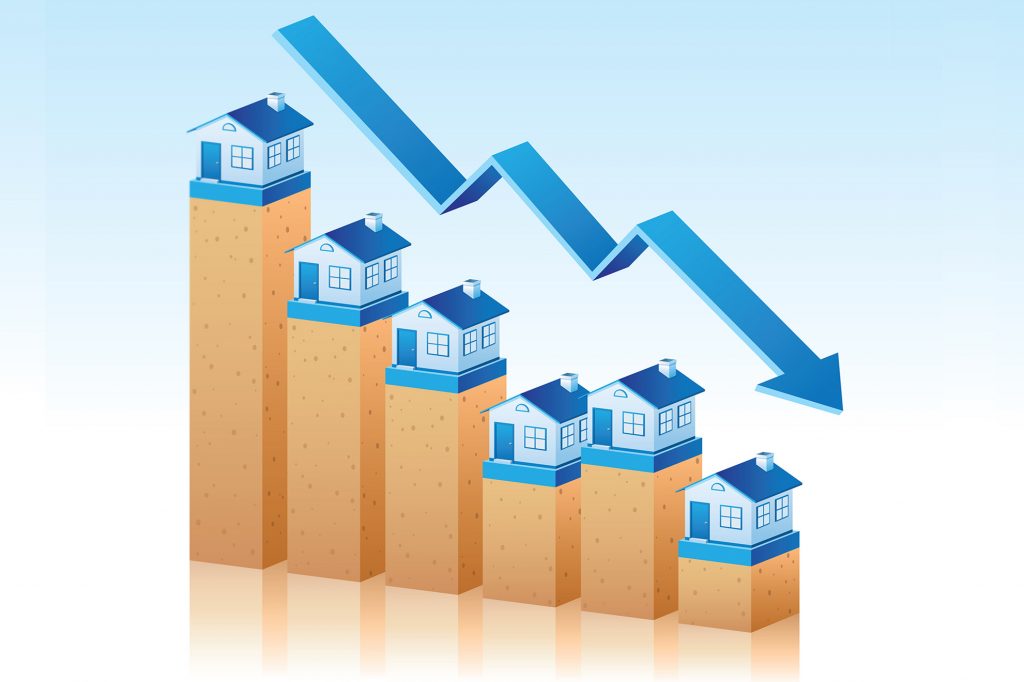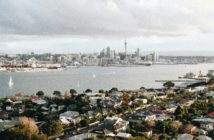The low number of new listings in July meant the number of houses sold in New Zealand during September decreased by -3.0% year-on-year

This was the lowest level number of properties sold since January this year, according to the latest data from the Real Estate Institute of New Zealand (REINZ).
The number of properties sold across the country fell from 5,674 in September 2017 to 5,506 in September this year – 168 fewer properties.
This is the lowest for the month of September since September 2011.
For New Zealand excluding Auckland, the number of properties sold decreased by -3.3% – 133 fewer properties when compared to September 2017 (from 4,023 to 3,890).
In Auckland, the number of properties sold decreased by -2.1% or 35 fewer properties, from 1,651 in September 2017 to 1,616 in September 2018.
REINZ Chief Executive Bindi Norwell says: “Traditionally there is a lag of about 6 weeks between significant movements in listings and sales results.
“With July’s listings down by 5.4% year-on-year and an all-time low level of listings in seven regions, it’s little wonder that September’s sales volumes were so low.
“There simply weren’t as many properties for sale resulting in a very quiet start to spring.
“However, with August and September’s listing numbers up 0.1% and 11.7% respectively, it is expected that October and November’s sales volumes will be much stronger – particularly as people want to sell ahead of Christmas,” Norwell adds.
Across the country 12 out of 16 regions saw a fall in volumes with 6 of those regions experiencing double-digit decreases.
Regions with the largest annual decrease in sales volumes were:
- Northland: -21.9% (from 215 to 168 – 47 fewer houses) – the lowest since January 2018
- Gisborne: -21.7% (from 60 to 47 – 13 fewer houses) – the lowest since January 2018
- West Coast: -18.9% (from 37 to 30 – 7 fewer houses) – the lowest since December 2017.
There were also some regions with strong annual increase in sales volumes including:
- Marlborough: +31.5% (from 54 to 71 – an additional 17 houses)
- Southland: +22.3% (from 139 to 170 – an additional 31 houses)
- Waikato: +9.1% (from 582 to 635 – an additional 53 houses).
Prices growth in the regions
While volumes were down around many parts of the country, the reverse was true from a price perspective, with 14 out of 16 regions experiencing an increase in median prices when compared to September last year.
Of those 14 regions, four achieved record median prices and one region equalled a previous record median:
- Gisborne: +26.9% to $342,500 (up $72,500 from the same time last year)
- Nelson: +23.1% to $592,000 (up $111,000 from the same time last year)
- Manawatu/Wanganui: +18.9% to $321,000 (up $51,000 from the same time last year)
- Northland: +12.2% to $505,000 (up $55,000 from the same time last year)
- Hawke’s Bay: +13.5% to $445,000 an equal record with August 2018 (up $53,000 from the same time last year).
Looking at the national picture, median house prices across New Zealand increased 5.9% year-on-year from $525,000 in September 2017 to $556,000 in September 2018.
For New Zealand excluding Auckland, the median house price increased 8.5% annually from $430,000 to $466,750 – a record high.
Auckland’s housing market has continued its now predictably stable pattern, with a median price of $850,000 the exact same price as September last year.
“There are now seven regions across New Zealand that have median prices in excess of the half a million-dollar mark with Northland the newest region to go over this level,” Norwell notes.
“Additionally, there are already three regions that have exceeded the $600,000 median mark and with Nelson’s median sitting at $592,000 it may not be too far away until we have a fourth region edging over the $600,000 mark.”
Norwell says that with population growth and demand for properties continuing to exceed the supply of housing stock, prices are likely to continue increasing in the short to medium-term.
“In fact, new research issued by AUT earlier this week suggested that at our current rate of supply we won’t reach demand until the mid-to-late 2020s,” she observes.
“This means that price pressure could well be an issue for some time – particularly in our more densely populated cities.”
“Looking at the Auckland picture, we’ve seen Auckland’s median house price hover around the $850,000 mark for 18 months now – this incredibly stable market is positive for first-time buyers who are desperately saving to get a foot on the property ladder.
However, it’s also good for investors, buyers and sellers too, as it means that everyone knows what the market is doing – there don’t tend to be too many happy people when the market is particularly volatile,” concludes Norwell.
REINZ House Price Index (HPI)
The REINZ House Price Index for New Zealand, which measures the changing value of property in the market, increased 4.0% year-on-year to 2,742 a new record high for the country.
The HPI for New Zealand excluding Auckland increased 7.4% from September 2017 to a new record high of 2,621. The Auckland HPI increased 0.4% year-on-year to 2,888.
The REINZ HPI again saw 11 out of 12 regions experience an increase over the past 12 months, highlighting the continued strength of the property market.
The only exception was Canterbury with a minor decrease of -0.1% year-on-year.
This month the Gisborne region had the highest annual growth rate of 14.9%, followed by Manawatu/Wanganui in second place with an annual growth rate of 14.6% and in third place was Otago with a 12.7% annual increase.
Days to sell
The median number of days to sell a property nationally increased by 2 days from 34 to 36 when compared to September last year.
For New Zealand excluding Auckland, the median days to sell increased on an annual basis by 3 days from 32 to 35.
Auckland saw the median number of days to sell a property increase by 2 days to 39 days (up from 37 in September 2017) – the lowest median days to sell since April this year.
Auctions
Auctions were used in 14.5% of all sales across the country in September, with 798 properties selling under the hammer – this is down slightly from September 2017, when 14.8% of properties (798) were sold via auction.
For the eighth month in a row, Gisborne had the highest percentage of auctions across the country with 42.6% (or 20 properties) in the region sold under the hammer – up from 31.7% (19 properties) in September 2017.
Auckland saw the second largest percentage of auctions on 26.4% (426 properties) up marginally from 26.1% in September 2017 (431 properties) – this is the first annual increase in auctions for Auckland in 8 months.
The Bay of Plenty maintained its spot of having the third highest level of auctions in the country with 19.4% (76 properties) sold under the hammer, down from 21.3% (86 properties) in September 2017.
Inventory
The number of properties available for sale nationally increased by 5.2% from 21,727 to 22,847 – an increase of 1,120 properties compared to 12 months ago.
This is the highest level of inventory for four months.
September saw six regions with an annual increase in inventory levels:
- Auckland: +17.7% from 7,429 to 8,740 – an additional 1,311 properties
- Nelson: +16.0% from 309 to 358 – an additional 49 properties)
- Waikato: +11.3% from 1,481 to 1,648 – an additional 167 properties
- Northland: +8.6% from 1,156 to 1,255 – an additional 99 properties
- Canterbury: +8.2% from 3,228 to 3,493 – an additional 265 properties
- Bay of Plenty: +1.2% from 1,335 to 1,351 – an additional 16 properties
Regions with the biggest falls in inventory were:
- Southland: -20.5% from 560 to 445 – 115 fewer properties
- Manawatu/Wanganui: -19.6% from 916 to 737 – 179 fewer properties
- West Coast: -16.5% from 563 to 470 – 93 fewer properties
- Gisborne: -13.9% from 139 to 120 – 19 fewer properties.
Wellington again has the lowest level of inventory with 8 weeks’ inventory, followed by Hawke’s Bay on 9 weeks and Gisborne and Otago with 10 weeks’ inventory available to prospective purchasers.
Price bands
The number of homes sold for less than $500,000 across New Zealand fell from 46.8% of the market (2,654 properties) in September 2017 to 41.4% of the market (2,282 properties) in September 2018, which is reflected by the overall increasing median price across the country.
The number of properties sold in the $500,000 to $750,000 bracket increased from 25.9% in September 2017 (1,472 properties) to 31.0% in September 2018 (1,708 properties).
At the top end of the market, properties sold for more than $1 million increased slightly from 13.4% in September 2017 (758 houses) to 13.6% in September 2018 (749 houses).



